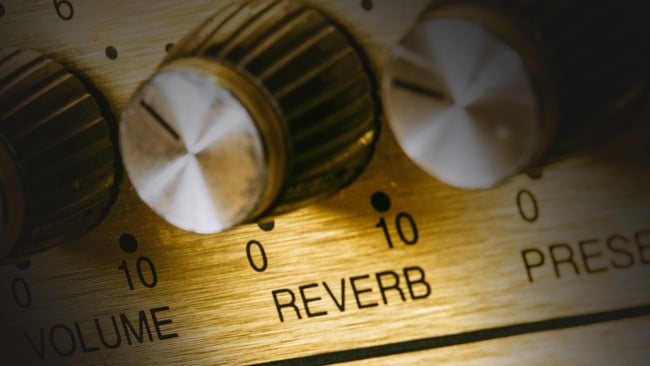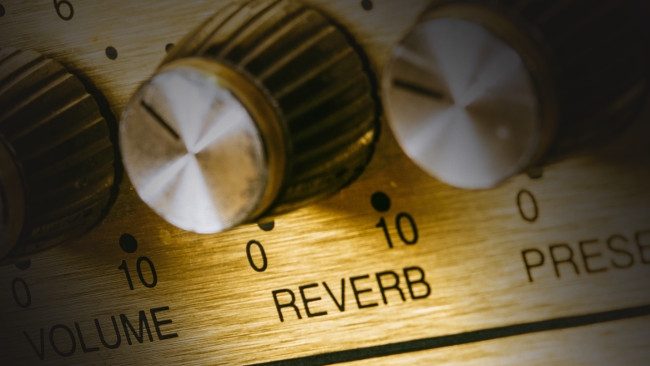
 Reverb graphic by www.shutterstock.com
Reverb graphic by www.shutterstock.com
While reverb can be described as a basic effect, understanding why we add reverb and how it works is foundational for our overall understanding of more complex effects.
Reverb is the most commonly used and abused effect, yet it is essentially a simple and versatile tool. I think that the problem lies in the fact that reverb seems to be the 'go to' effect when trying to create the illusion of space and that most users seem to load a preset from the VST's preset menu and mix to taste without knowing what is actually happening bar auditioning the resultant output. What makes it even more confusing is that most VST manufacturers will name their presets based on either the space that the reverb is trying to emulate or the sound that it is affecting. Although this is always a good starting point, for most users it can be a confusing path to go down.
Why we add reverb
Reverb serves a number of purposes and the two most important ones are that of 'colour' and 'space'. It can also be used as a corrective tool, for example: helping to add tails to sounds that have been cut abruptly.
The type of reverb used is as important as how to use it. There are occasions whereby a certain type of reverb is required on a specific sound or mix because of its design and build – a plate reverb is a good example.
Reverb is what I regard as the 'basic effect'. By studying how reverb works, you will achieve a good grounding in understanding how other effects work. Delays, chorus and so on are reliant on the mechanics of reverb and are formed on that basis.
We have been listening to music acoustically, for thousands of years. The natural acoustical space that the music was played in determined how the music was perceived. The environment and the materials that made up the surrounding environment had a huge impact on how the music was 'heard'. We may think that we are the innovators when it comes to creating the right 'space' for music to be heard in, but the Romans and Greeks had a head start on us and designed their amphitheatres and arenas to do exactly this. Some of their designs are truly impressive. Their understanding of space and the materials the space was constructed from is remarkable even today.
So, how does reverb work?
The listener hears the original sound, plus all the reflected sounds that come from the original sound reflecting off surfaces within the environment. These reflections are reflecting at varying distances and times. This is the nature of how sound moves in a given environment. As a result, the listener hears a composite of the original audio signal, the first reflections and the delayed reflections.
These 'signals' will eventually lose their energy and dissipate.
Imagine a square room whereby you, the listener, are sitting in the middle of the room. For now, let us work under the premise that the sound that emanates from you emanates in all directions, as opposed to being directional (which sound is). The room is made of brick walls coated with plaster. The walls and ceiling will have reflective properties. You shout. The shout begins to reflect from the nearest surface and ensuing reflections come from different angles at different times from different parts of the room. This makes perfect sense; the further away a reflective surface is, the longer it takes the sound to reach it and reflect. The trajectory of the reflection depends on the angle the sound reaches the surface and the angle the surface is at. For example: a sound reaching one of the corners of the room at a 90 degree angle will reflect at that angle and reflect off another surface and continue to reflect until it dissipates or loses energy. A good way to imagine the reverb aspect is to think like this: after you have shouted, the residual sound that remains is the reverb.
You can imagine what this means in rooms that have reflective surfaces, absorbing surfaces, irregular shapes and so on.
High frequencies are more prone to absorption and rooms with absorbing material (curtains, carpets etc.) will sound more muffled. Rooms with hard reflective surfaces will sound brighter and more brittle.
So, reverb is simply a term that defines the reflective properties of a given space and how those reflections are projected and processed.
Today, we emulate the space of the environment and use this in our music.
Our effects units can not only emulate real spaces, but also create spaces that do not exist naturally in nature, such as gated reverbs or reverse reverbs.
Graphic by Shutterstock
Tags: Audio


Comments